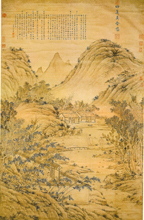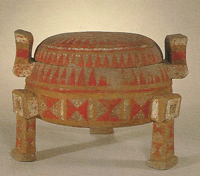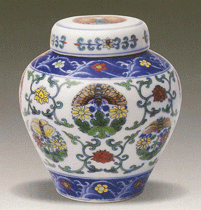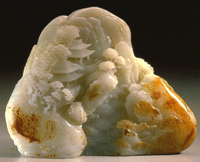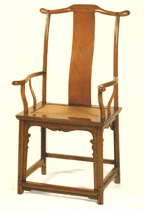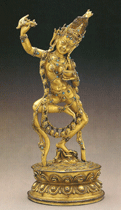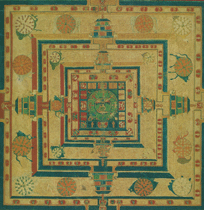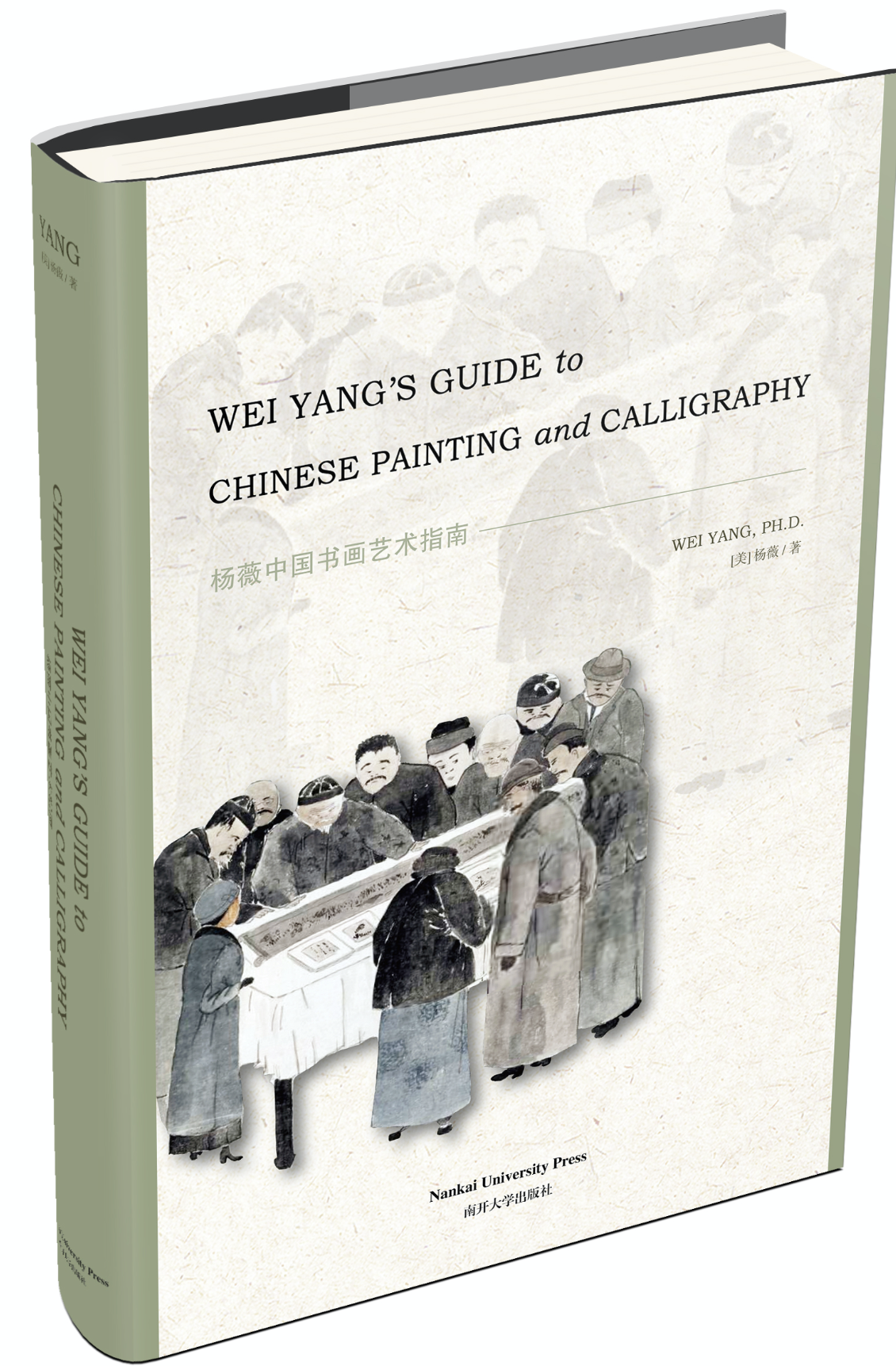CHINESE ART TOPICS
SELLING ART WORK
Selling Art Is Never Easy. If you have a strong will to sell your artwork, you will find the window of opportunities that is right for you and your artwork. Selling Asian artwork for a fair price is never easy. Breaking into an auction house or finding a professional sales agent with no conflict of interest for representation is extremely hard. Considering the different layers of issues (choice of appropriate market, value estimates, commissions & fees, etc) relevant to a successful sale, in my professional opinion, acting as your own sales agent might be better than following the traditional auction path. If I were you, I would first investigate the layout of the art market, find the names and specialities of reputable auction houses, agents or dealers, and contact them for consignment or private sale. Second, I would take advantage of the high technology and market my artwork at active online sales venues for the greatest exposure. Considering a private sale, which is very trendy in the current market, would be my third option. Next, I would have realistic expectations from the sale of my artwork, no matter what sales venue I take. lastly, I would anticipate that a private sale usually results in a lower cash payment, a marketing strategy that would offer me a quick transaction while excusing me for paying buyer's premium and fees charged by auction sale.
Selling Ivory Is Impossible. Selling ivory carvings or object with ivory is not salable in the current market. The new regulations on ivory have marked the ivory market with the following features. 1) No ivory can be imported, regardless of its country of origin; 2) No ivory can be exported, except for "bona fide antiques," non-commercial items and certain items allowed under the Endangered Species Act (100 years old); 3) Sales across state lines are banned, except in the case of antiques where "documented evidence of age" is provided; 4) Sales within a state are prohibited, unless a seller can demonstrate that the ivory was lawfully imported prior to 1989 (or prior to 1975 if it is Asian ivory).
Today, the trade of ivory objects becomes more and more difficult. Not only ivory owners, but also art professionals (musicians, dealers, etc) are very frustrated by the tightening ivory regulations and rules. New York Times's article on Limits on Ivory Sales reflects the reaction of related parties to the new regulations that "ban Americans from importing and, with narrow exceptions, exporting any item that contains even a sliver of ivory. The rules do not ban private ownership, but they outlaw interstate sales of ivory items, unless they meet what sellers describe as impossible criteria." The magic number is "100 years" that separates the old from the new.
If the situation worsens, what could the ivory owners do with their ivory collection? If ivory objects suddenly become unsalable, how would the market respond to that situation? There are too many unanswered questons. Probably, we need to wait and see what happens next.
Selling via Auction Consignment is Exhaustive. I have heard too many complaints about selling with auction houses. It is true that getting the attention of Christie's and Sotheby's to your artworks for presentation are exhausting and uncomfortable. First, you don't understand what the auction house wants or needs. Second, you receive vague responses from different agents regarding the salability of your art works. No matter how hard you try to be understanding, the myth of an auction house and the secrecy of consignment are never self explanatory. You are also concerned about the qualifications of the auction agent who responds to your inquiry, or if you can get a good term for consignment, assuming you are lucky. Doubtless to say, so many unanswered questions and uncertainties would make you feel restless and discouraged. Unfortunately, there is no remedy for this auction sales dilemma. As a matter of fact, most auction agents are professionals with integrity working hard to assist you. The reality of dealing with a big volume of inquires like yours might warrant the auction agents a break for their delayed attention. In other words, while working with an auction house, a delayed response is unavoidable unless your property is of the most desirable features.
Breaking into an auction house like Christie's and Sotheby's is never easy, gearing up your patience and courage, dealing with all discomforts with grace are your ways out. In other words, let's not give up, and let's have faith in people. let's also consider the two practical factors relevant to the sale of artwork. First, a rejection from Christie's and Sotheby's does not mean your art work is worthless. Second, your patience with finding the right auction house or sales agent will be rewarded, since if there is a problem, there is a solution. You just need to knock on the right door.
HOW TO SELL ART WORK
Be Practical, because you will be dancing around the appraised value from the sale. Sometimes, the hammer price is higher than the appraised value, sometime the opposite, depending on the market conditions. Before marketing your artwork, understanding how art value works in the real world is a must. You need to ask yourself, What do I want from an appraiser? An objective appraisal or a "high" value endorsement? In reality, an appraised value is neither what an appraiser "think" you art is worth nor the price tag you see in a gallery. It is a price reference based on the market performance of similar or relevant objects in the recent past. It leads you to rational possibilities that serve best your practical needs. As an art owner, you need to understand the two distinctive segments of the art market: retail and secondary, and how value is related to each. The former refers to dealers, galleries and art professionals who sell art at a higher retail price. The latter underlines parties (auctions, estate sales, online sales, and you, the art owner, etc) other than dealers and galleries who sell art at a lower wholesale price. As a matter of fact, a retail value is significantly higher than a wholesale value. Before engaging the services of an appraiser, judging the professional integrity of your appraiser before retaining the appraiser is crucial. In reality, a "high" value is worthless unless it is supported by market evidence.
The market, NOT the appraiser, decides the worth of your art work. If the market does not support the appraised value, then, you ask, why do I need to pay an appraiser to give me a nonsense estimate? An ethical appraiser would listen to your intended use of the value conclusion, consider all relevant factors and market trends before arriving at a value conclusion that is appropriate for your artwork. In short, having a credible appraisal and preparing yourself for a realistic market return form the basis for effective marketing and price negotiation.
Be Patient: Because selling art is not easy. Almost everybody finds it difficult to initiate a sale. When you need help, you may not be able to find the right sales agent to represent your artwork at its most appropriate marketplace. Many people begin by contacting famous auction houses, such as Christie's and Sotheby's, but very few receive an insightful response, sometimes, no word at all. Others spend hours on the internet without any concrete results. Many art owners eventually give up marketing their art work, because they lack the knowledge of Chinese art. They don't know the worth of their art works and end with selling for far less. Do these frustrations sound familiar?
A successful sale is based on preparation. You need to possess solid information on your art work and formulate an educated strategy for sales. You may find the needed information online. You may be stuck in your research, since no quality information is available on your art work. In many cases, the problem lies in identification. Once you know what you have, who created it and the possible fair market value of your artwork in the current market, your marketing strategy will be effective.
Be Prepared: Because understanding what you have is essential. Engaging the services of a qualified Asian art appraiser is a necessity when you know nothing about the art and its worth. A real art professional is a vigorously trained individual who attacks research problems for living. Whatever your problem is, a qualified art professional will find the solution for you. If you need assistance with identification of Asian characters (name, inscription, signature and mark), you need the language skill of an Asian art consultant. If you feel trapped in your research and have exhaused your options, you need the expertise of an art historian. If you are unsure about where your art work rests on value, you need the services of an appraiser. A properly prepared appraisal often serves two goals. First, it provides you with the information needed to understand what you have and its market potential. Second, it answers your call for assistance with clear strategies for success.
Knowing when to engage an art professional is a judgment call. As the art market is growing more and more sophisticated and the challenges of Asian art are becoming more and more urgent, most art owners cannot afford the risk of selling art work without any professional guidance. However, not all art works merit full professional attention due to their limited value. Sometimes, you may not need an appraisal but some practical advice from a qualified art specialist. If you are trapped in the art sales dilemma, contacting a professional appraisal organization, such as American Society of Appraisers, for recommendations will bring you real relief.
NEED APPRAISAL TO SELL?
Not Really: You don't need an appraisal to sell art works, if you know enough about Chinese art and the market, you are capable of researching the art market, analyzing the sale data and calculating the value of your art object at its most appropriate market place. If you work with a reputable auction house or dealer, the interested party will provided you with the needed informaiton for free, if your property is valuable. Before approachin the market, you need to consider (and understand) a set of specialized auction terms, such as the hammer price, buyer's premium, how the low and high auction estimates work, and how to adjust the value estimate to match the quality of your art work. You also need to know how to calculate fees and commissions.
Benefits of Having An Appraisal: A Restricted Appraisal for personal use is helpful if you need some professional guidance. An USPAP-complied appraisal will answer basic questions, such as identification, value characteristics, market trends, and some comparables relevant to your property. Engaging the services of an appraiser is effective, if you need professional assistance with marketing strategies. Comparing with a vague or confusing response from an auction house, an appraisal prepared by an independent art appraiser is valuable, since there is no conflict of interest in the provided services. No auction house will take the time to explain to you why they are not interested in your art work. This is exactly where the value of an appraisal stands. A prepared owner often stands a much better chance of profitting from the sale when negotiating from a position of strength.
An appraisal will guide you to a realistic expectation from the sale. Being realistic or practical is a healthy approach to the market. Selling a valuable work of art without an appraisal is difficult, if you don't know where to start with the price negotiation, and when you need to accept a fair offer. Sometimes, An up-to-date appraisal may shed light on the changed market conditions via a few qualified comparables and the market analysis included in the report. In addition, the art market is quite unlike the real estate market, in that it is mysterious, difficult to learn about, and subject to significant fluctuation. You canít just look up the previous sales records for the object you wish to sell (or buy), because there are layers of informations that will determine an artwork's marketability, which is usually in an art appraisal.
An appraisal report prepares you for the market, if you have limited knowledge of the current Chinese art market. It directs you to deal with the market with the knowledge and confidence of an insider. Many people assume that an auction house will always offer the best value for their objects, but that is often not true. An informative art appraisal alerts you to the possible sales options or individualized solutions to your specific problems in clear language. The market analysis included in a summary appraisal helps you think creatively about other options, including museum donation, gift to charity, and other measures that can may reduce your tax burden.
FINDING THE RIGHT APPRAISER
"Qualified Appraisal" by "Qualified Appraiser" is essential. The qualifications of an art appraiser is crucial. Before you commit yourself to an appraisal, you need to make sure that your investment in professional services is worthy. Before you hire an appraier, you need to find out if the appraiser has Asian art expertise. An appraisal is useless if the appraiser misidentify an artist and art work or fails to read the name seals in the carving scripts. An appraisal is misleading if the appraiser rely heavily on the signature without verifying its authenticity or analyzing the signed artist's artistic merits in terms of brushstrokes, ink and shading techniques, medium, etc. Does your appraiser know Asian visual aesthetics and cultural traditions? Can your appraiser read classical Chinese scripts and has the ability to research in Japanese, Korean or Chinese? Can your appraiser identify a fake? Can your appraiser rank a Chinese artist and his works among his equals prior to arriving at a value conclusion? Doubtless to say, the value of a fine original painting is signifcantly higher than that of a fine reproduction "in the style of" or "after" a master artist. A forgery of a masterpiece by a less capable hand is worthless. If your appraiser lacks any of these skills, the reported value maybe questionable. Only a qualified art appraiser can prepare an objective, well-researched appraisal that attests professional scrutiny.
As an Accredited Senior Appraiser (ASA) in Asian Art & Appraisal Review and Management (ARM), Dr. Wei Yang, Ph.D. in Chinese Art & Tibetan Art, is in full compliane with the Uniform Standards for Professional Appraisal Practice (USPAP) in her practice and appreciates the value of a credible appraisal report in the real world. Our Asian Art specialists are academics with Ph.D. in Chinese art, Chinese History, Buddhist Studies, having received professional specialty training in prestigious universities in the United States. We read and speak a unique set of Asian languages, understand Asian cultural traditions and visual aesthetics. We serve you with over 30 years of experience in Asian art education, working with Asian art objects, doctoral training in Chinese art, history, and culture, and original published research. We possess a set of specialized research skills unmatched in the field. We are good at what we do for making a living.
ART AUTHENTICATION
-Certificate of Authenticity
Dr. Wei Yang neither provides art authentication nor issues any certificate of authenticity in any form.
Dr. Wei Yang offers quality professional Chinese art consultation and Asian art appraisal services at an affordable rate. Because Dr. Yang believes that artowners should have access to quality art consulting and appraisal services, and they deserve some professional compassion or generosity.
Need quality Asian art consultation and appraisal?
Starting with a preview of your property for appraisal is wise. Preview information is available at Preview My Artwork
